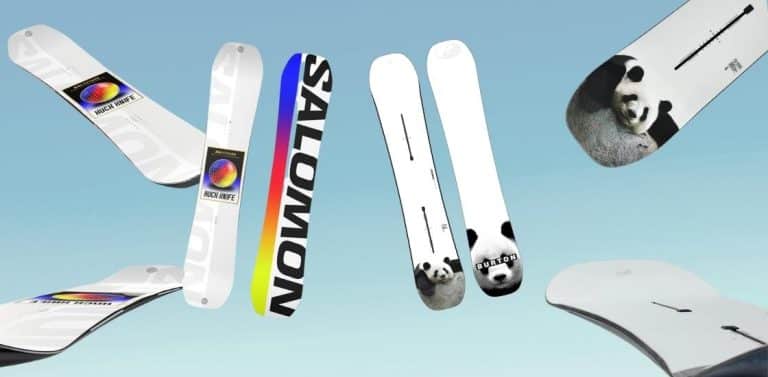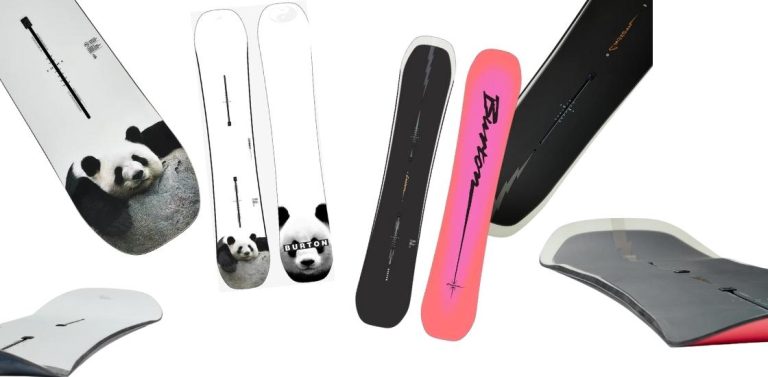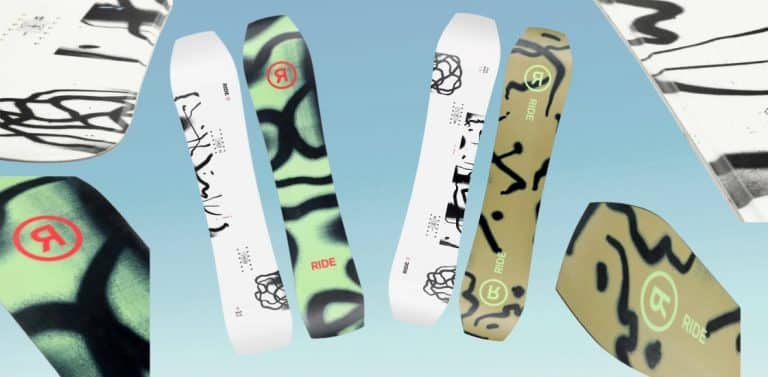You can tell a good snowboarder from a beginner by how much time they spend sitting on their butt!
Whether it be getting off the lift, on the side of the slopes, or waiting to drop in at the snowpark, good snowboarders will always be standing up.
In this article, I will show you how to strap into your bindings and how to stop on your snowboard without sitting down. Plus a few tips which will make your life standing up a lot easier
Why do snowboarders always sit down?
One of skiers’ most common complaints about snowboarders is that ‘they spend the whole time sat in the middle of the slope!’ But remaining standing on a snowboard is not that easy!
Unlike skiers who have 2 separate skis to stand on, snowboarders are fixed onto one board, and we only have one edge to hold our balance on the slope. So it’s kind of like stopping on a bike and trying to stay balanced without putting your feet down – not that straightforward!
So staying stood up on a snowboard is not easy and requires a lot of skill, so why bother? Why not just sit on your but? As a snowboard coach, when I take out an advanced group sitting down is banned! Here are some of the reasons.
- It helps develop edge control
- It’s safer to be standing when you can quickly move out the way if needed.
- If you sit down, you need to stand up, which becomes hard work on your legs and core.
- You don’t get a wet butt!
- You look like you know what you are doing
- You don’t annoy skiers (optional)
The most valid reason on that list is that it develops edge control. Finding the sweet spot where all the forces are balanced so that you don’t start sliding is a fundamental skill, that will help other areas of your riding.
Better edge control will develop feeling with your turns, traversing, and also with freestyle moves.
Before we move on to how to not sit down after stopping and how to strap into your bindings stood up. Here are a few hacks which will make your life easier:
Find flat ground -standing upright on flat ground is easy! It’s when you are on a slope that holding your balance becomes an issue. So always look for the flattest patch of snow to stop on or to strap into your bindings.
Find loose snow – if you are on a slope, then it is much easier to control your board where the is some loose snow to dig your edges into. Usually, you’ll find more loose snow at the side of the slopes. Plus, it’s a good place to stop out of the way of other skiers and snowboarders.
Hold on to something. If all else fails – cheat! Holding onto a trail marker, a post or a skier is the easiest way to keep standing!
How to strap into your snowboard without sitting down.
When strapping into your board, the front foot is the foot you put in first, and this part is easy. The difficult part to do standing up is strapping in your back foot.
Firstly, it’s important that the snowboard is not moving. There are 2 ways in which the board can start moving. Sliding – when the board starts running along its length. And slipping when the board starts slipping down the hill.
For the board to not be sliding it needs to be perpendicular to the fall line. That means at 90 degrees to the direction gravity wants to pull you down the hill. Whilst this sounds pretty easy, slopes are always undulating so it’s not always clear which direction down is! If you feel the board is starting to slide, then you need to adjust the angle of the board a little.
Next, you need to stop the board from slipping. The easiest way to do this is to create a little shelf in the snow for your board to sit on. With one foot strapped in, chop the board into the snow at a shallow angle. The softer the snow, the easier this is.
Once you’ve created a shelf and your board is perpendicular to the fall line then you can test it out by standing on the board and seeing if it starts moving.
If your board is stable, then you can reach down and strap in your other foot. With the board attached, you can give a little shuffle to get the board free of the shelf and ride away!
How to not sit down after stopping.
Here the theory is the same: You need the board perpendicular to the slope, and you need a ledge to rest on.
With both feet attached, the difficult part is creating the shelf. Especially if the snow is hard, you will have to rely more on edge control. Edge control is a key part of learning to snowboard. But it’s a skill that you can continue to work on. The better you are at balancing on edge, the easier it will be to stand up.
If your edge control isn’t on point, then there are some ways to make life easier for yourself.
Try and head to the side of the slope and find some loose snow; this will make it easier to shuffle the board back and forth to create an edge.





